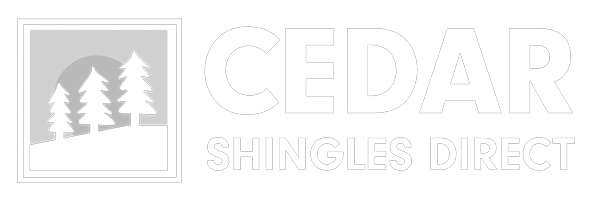Western Red Cedar Shingles Installation Guide
When installing Western Red Cedar shingles, it’s crucial to follow these comprehensive steps to ensure a successful and aesthetically pleasing outcome:
1. Prepare the Base: Double Starting Course Commence the installation process by doubling the starting course at the base of the wall, as visually detailed in Figure 6. This initial step sets the foundation for the entire shingle installation process.
2. Optimal Keyway Spacing for Cedar Shingles Depending on the type of shingles being used, maintain the appropriate keyway spacing to achieve the desired visual effect. When employing Number 1 Grade Cedar Shingles Direct Western Red Cedar shingles, maintain a keyway space of 1/8” to 1/4” between each shingle. For Number 1 Grade Western Red Cedar Shingles, ensure a keyway space of 1/4” to 3/8” between shingles. This intentional spacing enhances the distinctive appearance of each course of shingles.
3. Precise Offset of Side Joints To create a visually appealing pattern and prevent unsightly alignment, meticulously stagger the side joints within each course. Maintain a minimum offset of 1 1/2″ from joints in adjacent courses, as exemplified in Figure 2. This technique elevates the overall aesthetic of the shingle installation.
4. Establish Straightness with a Guiding Edge Safeguard the straightness and levelness of your shingle courses by utilizing a straight edge. Gently secure the straight edge to the wall with nails, aligning it with the shingles’ butt line. This measure ensures that each course maintains a consistent level and alignment. Periodic checks for levelness every 3 or 4 courses are recommended to verify accuracy.
5. Concealed Nailing for Durability and Aesthetics Employ concealed nailing to enhance both the durability and visual appeal of your shingle installation. As illustrated in Figure 6, drive nails approximately 1″ above the butt line of the next course. For Cedar Shingles Direct Western Cedar shingles up to 10″ in width, use two nails per shingle, positioning them 3/4” from each edge. For shingles wider than 10″, insert two additional nails spaced around 1″ apart near the shingle’s center. This strategic nailing technique ensures secure attachment and uniformity across the installation.
6. Minimize Waste and Ensure Precise Fits The inherent variation in Cedar Shingles Direct Western Cedar shingle widths minimizes waste during installation. However, in scenarios such as corners, doorframes, or window frames, it might be necessary to make slight adjustments to specific shingles. This attention to detail guarantees a precise fit and a polished final result.
By meticulously adhering to these comprehensive installation guidelines, you’ll achieve an exceptional and enduring installation of Western Red Cedar shingles that showcases both craftsmanship and aesthetics.
General Guidelines for Installation and Finishing
Preparation & Storage
- Check Local Building Codes: Before starting, consult your local building code for specific cedar shingle installation requirements.
- Initial Inspection: Before installing, inspect the product thoroughly. If it’s not satisfactory, don’t proceed with the installation. Note that defects reported post-installation cannot be held as the supplier’s responsibility.
- Storage Conditions:
- Store the shingles flat in a well-supported manner, ensuring they are under dry cover.
- Ensure the storage area is well-ventilated and unheated.
- If storing on concrete, place a vapor barrier beneath the materials and elevate them. This is crucial to prevent moisture absorption.
- Store the shingles on their original pallet to keep them elevated from the ground or cement.
- Always use slip sheeting between shingle layers to prevent sticking. Replace any slip sheeting if restocking.
- At the end of each workday, cover any uninstalled shingles to protect them from environmental factors.
- Installation Timing: It’s recommended to install the shingles as soon as they’re received to maintain their quality.
Installation Procedure
- Material Inspection: Before installation, inspect each shingle. Remove and cut out any defects or imperfections to ensure a seamless finish.
- Seal Cuts: If you’ve made cuts or alterations to any shingle, make sure to seal the raw wood areas before installation. Be cautious: applying touch-up to the face of the product may cause uneven spotting. The supplier won’t be responsible for improper touch-ups.
- Nail Head Finishing: If you need to touch up nail heads, utilize a Q-Tip or a very small brush. Improper nail head touch-ups that result in spotting won’t be the responsibility of the supplier.
- Nailing: Always utilize corrosion-resistant nails. Acceptable choices include hot-dipped galvanized, aluminum, or stainless steel maze nails.
- Follow Specific Instructions: Depending on the type of cedar shingle product you’re using, refer to the specific installation guide provided:
- Red Cedar Shingles Installation
- White Cedar Shingles Installation
- Cedar Valley Shingle Panel Installation
- Red Cedar Siding Installation
- Factory Finished Installation Instructions
Cautionary Note on Wood Products
Be aware of the natural properties and potential risks associated with wood products. Ensure all safety precautions are taken during installation and maintenance.
For a comprehensive understanding and specific details, always refer to the product’s official manual or contact the supplier directly.
Wood Products Caution
Wood Products Caution
Sawing, sanding, or machining wood products can produce wood dust which can cause a flammable or explosive hazard. Wood dust may cause lung, upper respiratory tract, eye, and skin irritation. Some wood species may cause dermatitis and / or respiratory allergic effects. The international agency for research on cancer (IARC) has classified wood dust as a nasal carcinogen in humans.
- Avoid dust contact with an ignition source.
- Wood dust clean-up and disposal activities should be accomplished in a manner to minimize the creation of airborne dust.
- Avoid breathing dust.
- Avoid dust contact with eyes and skin.
FIRST AID: If inhaled, remove to fresh air. In case of contact flush eyes / skin with water. If irritation persists, call a physician. For additional information or a copy of the Material Safety Data Sheet (MSDS) for this product contact Michigan PreStain.
Need Support?
CedarShinglesDirect.com
Phone: (800) 269-0598
Address: 3903 Roger B Chaffee Memorial Blvd SE, Grand Rapids, MI 49548

